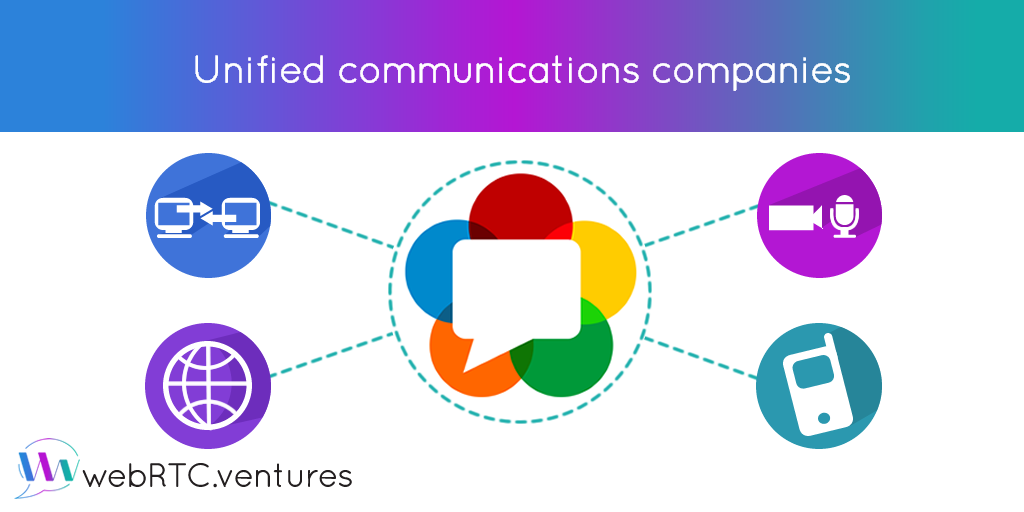Unified communications refers to both real-time and non-real-time communications, it is based in the preference of the recipient. In Unified communications multiple modes of business communications are integrated. It is not a single product, but rather a collection of elements that include:
- Call control and multimodal communications
- Presence
- Instant messaging
- Unified messaging
- Speech access and personal assistant
- Conferencing (audio, Web and video)
- Collaboration tools
- Mobility
- Business process integration (BPI)
- Software to enable business process integration
[data from https://en.wikipedia.org/wiki/Unified_communications#Components]
For example in a video conference, the main platform could be supported using vidyo, and the audio could additionally be supported using a landline phone or a mix among landline phone and skype.
The most popular Open Source Unified Communications Solutions include:
- Asterisk
- Asterisk is an open source framework for building communications applications. Asterisk turns an ordinary computer into a communications server. Asterisk powers IP PBX systems, VoIP gateways, conference servers and other custom solutions. It is used by small businesses, large businesses, call centers, carriers and government agencies, worldwide. Asterisk is free and open source. Asterisk is sponsored by Digium.
- SIPfoundry
- Universal Cloud Communications Stack (UCCS) is a revolutionary concept to leverage big data architectures for real-time communications and collaboration, resulting in elastic scalability of transaction-oriented services on a global scale. Rapid deployment and automated management leveraging standard infrastructure are key immediate benefits.
- Elastix
- Universal Cloud Communications Stack (UCCS) is a revolutionary concept to leverage big data architectures for real-time communications and collaboration, resulting in elastic scalability of transaction-oriented services on a global scale. Rapid deployment and automated management leveraging standard infrastructure are key immediate benefits.
And Top Unified Communications Solution providers and integrators include:
- Diversified
- Diversified’s Unified Communications Solutions Practice enables meaningful, productive, multimodal collaboration. Our UC technologies and custom cloud solutions offer secure platforms that are agile, reliable and scalable. Focused on enhancing how your organization works by broadening your communication potential, we design and deploy Cisco UC, Polycom, Skype and LAN/WAN optimized networks that offer limitless collaboration.
- Huawei
- Huawei Enterprise Communications (EC) Solution provides integrated voice, data, multimedia, and video capabilities for effective collaboration across the enterprise.
- Matrix Comsec
- Matrix SARVAM UCS is a Unified Communication Solution engineered on four pillars of Collaboration, Communication, Messaging and Mobility to enhance customer convenience and business productivity. With its intuitive interface and built-in real-time features of Video Calling, Email Integration, Presence Sharing and BLF Keys, Matrix SARVAM UCS empowers an organization to easily extend its reach to the employees. It is designed to overcome geographical, communication device and user-accessibility barriers with a single platform solution.
Some big players in this heterogenous environment of Unified Communication include:
- Vidyo,
- Acme Packet,
- Aspect,
- AudioCodes,
- Avaya
- Broadcom,
- BroadSoft,
- Brocade Communications Systems,
- Cisco,
- ClearOne,
- HP,
- Huawei,
- Jabra,
- Juniper Networks,
- Logitech / LifeSize Communications,
- Microsoft,
- Plantronics,
- RADVISION,
- Siemens Enterprise Communications,
- Teliris,
- VOSS Solutions
As mentioned above, Unified Communication is not single tool or technology. It is convergent of several technologies and several companies come together to provide a part of a Unified Communication platform. It is crucial that all these tools and technologies speak a similar language to provide the real-time and non-real-time communications that recipients require.
Therefore, it is useful know the main players in this diverse world of Unified Communication.
We hope this article gave you a quick overview guide to unified communications. If you need help building your real-time communication application? We can help. Contact us Today!




